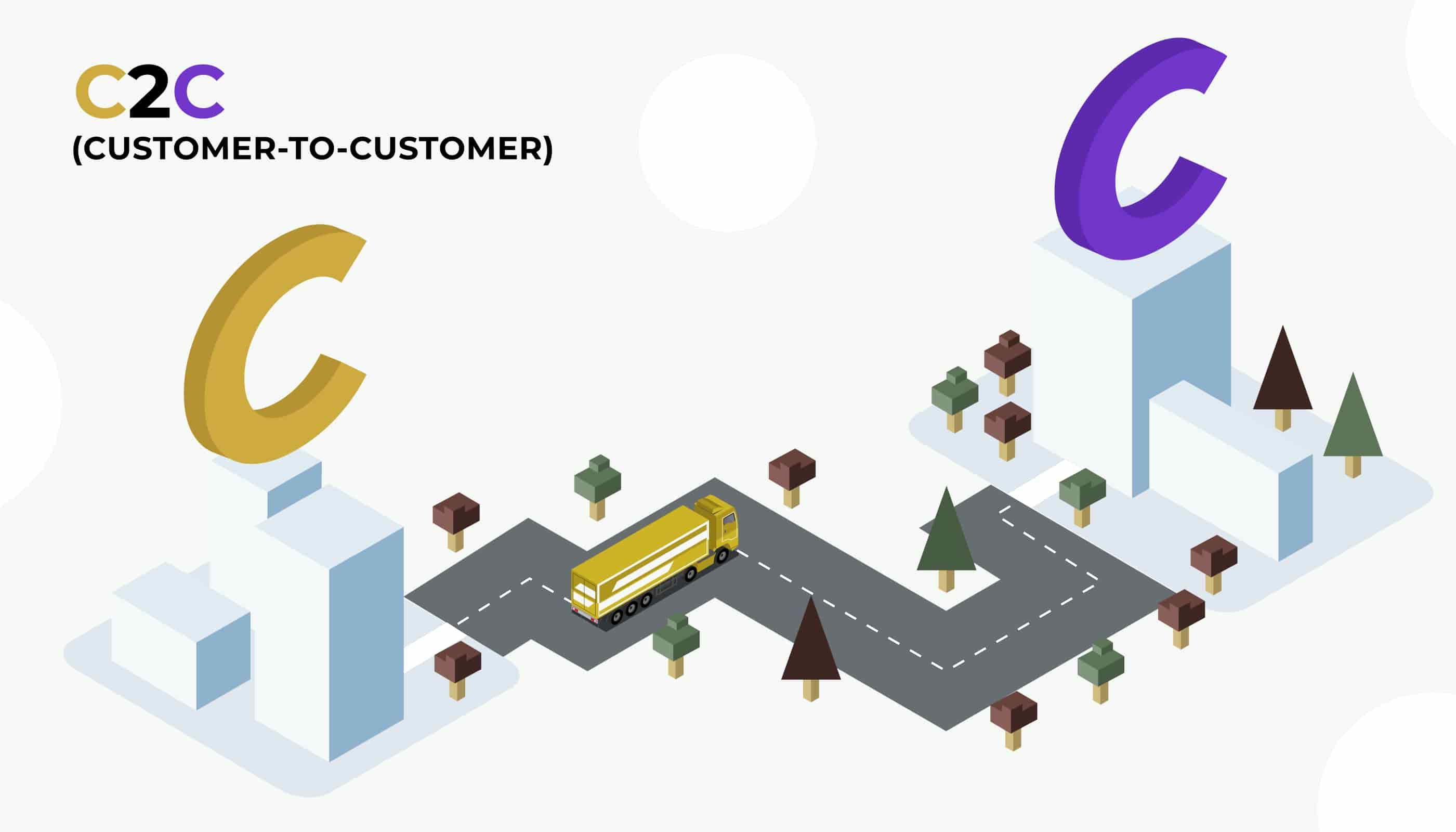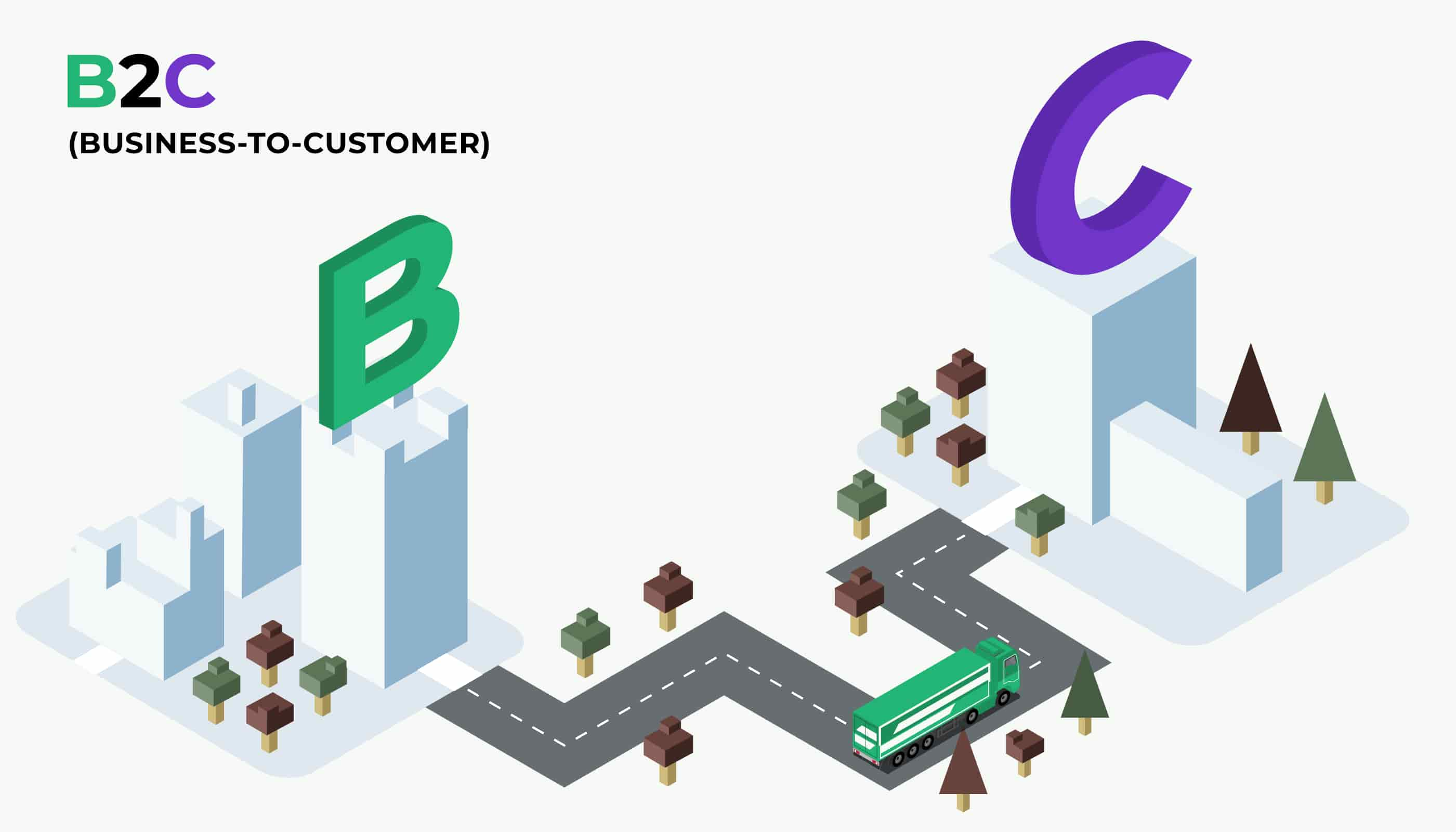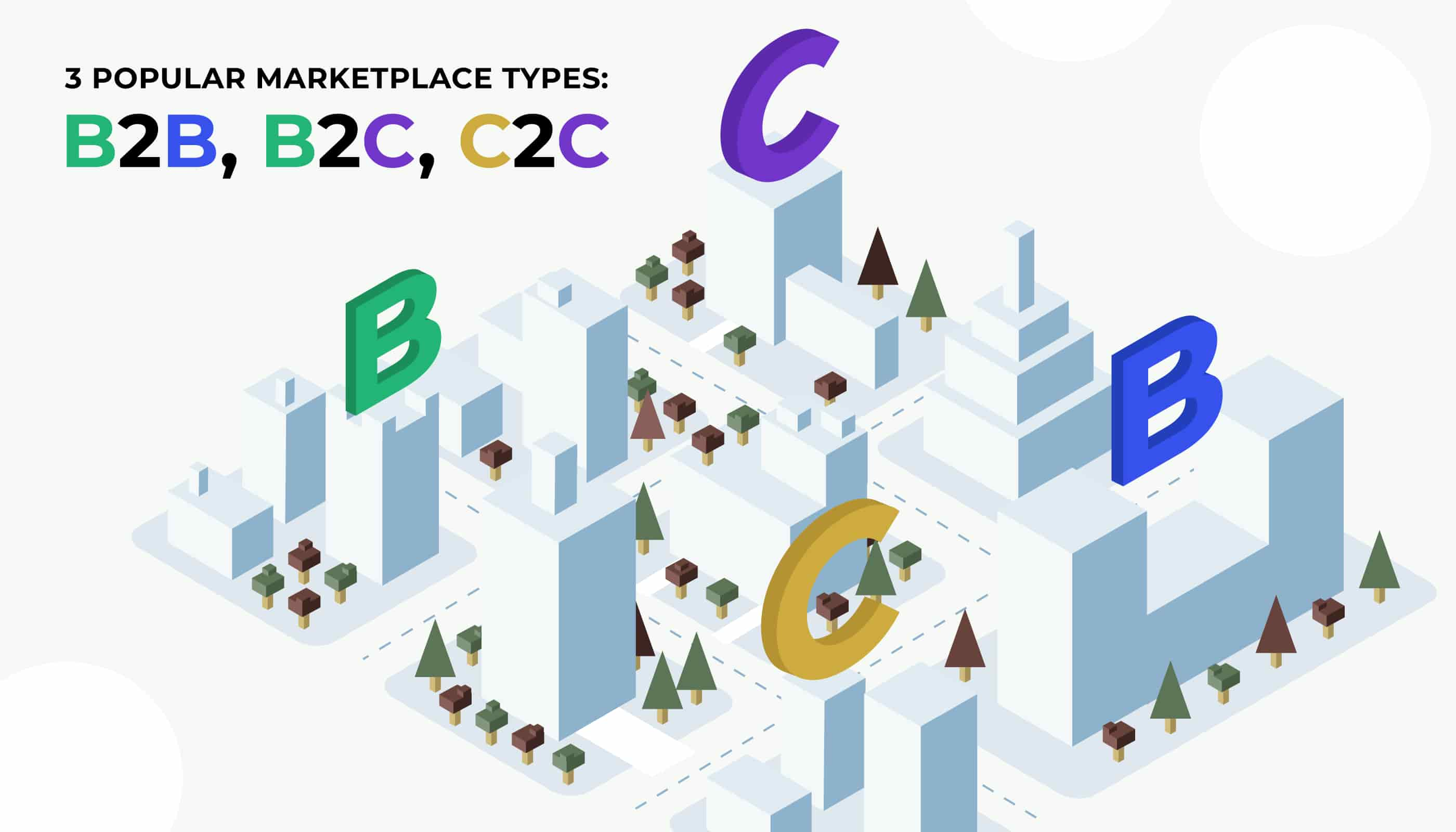Short description of the article
Intro
С2С (customer-to-customer) marketplaces
B2B (business-to-business) marketplaces
B2C (businesses to customers) marketplaces
Conclusion
Intro
Nowadays a lot of people familiar with the idea of an online marketplace. This article will help you to differentiate the main three types of the online marketplace that you might use for your future project.
In fact, an online marketplace provides multiple sellers and buyers in contrast to online shops where only one seller is presented. There is a vertical and horizontal model of doing business online. Vertical business sells goods of only one industry segment and horizontal model offers goods and services from various spheres.
There are much more types of marketplaces such as mCommerce and eCommerce marketplaces, auction platforms, crowdfunding, however this article focuses on B2B, B2C, and C2C marketplaces as the most well-known ones.
Also read our article: Top 10 Online Marketplaces According to the Selling Rates in Current year.
So, let’s take a look at the first marketplace type.
С2С (customer-to-customer) marketplaces

It means that all participants are equal. Sometimes this type is called P2P meaning the interaction between users: peer-to-peer, people-to-people, person-to-person. People, coming to the platform aren’t business owners. They want to sell or to get something and arrange it on favorable terms. The marketplace helps them to save money. The users unite different communities. They switch roles: today they buy and tomorrow they will sell.
Concerning money saving: The good example is a ridesharing marketplace BlaBlaCar. It helps the drivers to find passengers and vice versa. The drivers have got a free place in their car and the passengers don’t spend much money. The websites tell about the saving possibility on the front page. It’s called sharing economy when the cost is shared among all participants. The similar search Lyft promises to help save up to 60% of the travel cost.
Despite the money economy, the participants get other important benefits and new acquaintances, an interesting ride, mobility (they can discuss time, route and stops with the driver).
Not only money saving can be the main reason for users. For example, Couchsurfing is a service for travelers, the registered users have the ability to live in each city of the world for free - the bed and the meal are offered by the hosts. However, despite the money saving this service is interesting for other reasons. Travellers have the possibility to contact the locals, to see how they live and to share travel experience. That’s why the front page of Couchsurfing doesn’t mention money saving, it states another features: stay with locals and meet travelers.
All C2C marketplaces build communities of interest. These are traveling for Couchsurfing, hand-made things for Etsy or pets for DogVacay. The users come to the platform because it fits their interests, and start using the service.
In the C2C model all users are equal and one can offer as well as receive service. So participants can switch roles. For example, SkillShare offers to learn online after choosing the necessary topic. If you have good skills in some sphere, make a video on the website about your skills and find students to share your knowledge. So users can both learn and teach. Preply - the marketplace for tutors search has got a similar approach. The service helps to learn languages in skype or to teach your native language.
What is the conclusion about C2C marketplaces? The clear division of roles don't present here, the interests of users are similar and the conditions are profitable for both participants.
B2B (business-to-business) marketplaces

Business-to-business means that one business sells something to another business on favourable terms. For example, many marketplaces from China work like that: the business owner from the other country orders wholesale supplying from the Chinese business owner.
The marketplace can work as B2C but create a separate offer for businesses.
Also read our article: Building your Marketplace App. Your Step-by-Step Guide.
Let’s remember about the marketplace used by almost every traveler: Booking. It is a B2C marketplace. It helps to book hotels and apartments all around the world. But its subproject Booking belongs to the B2B marketplace and is intended for tour operators, travel agents, and carriers. All its users are small and large businesses.
For instance, one side is represented by hotel owners and the other side - by tour operators which are willing to save money at booking and to get volume discounts.
Another good example is Alibaba marketplace, which allows the business owners to order wholesale supplying. Almost all goods are represented in this platform (electronics, appliances etc.) Each businessman can make an order.
And the third model is the already mentioned above B2C marketplace.
B2C (businesses to customers) marketplaces

The advantage of such platform is a big choice of commercial offers in the same website. It’s a “one stop shop” — a place where one can find everything he/she needs.
People contact businesses and don’t stay at couchserfer’s place but in hostels and hotels, for example, above mentioned Booking or BedandBreakfast. The advantage of these platforms is a big choice of commercial offers on one website.
Another example of B2C is AliExpress - the world known marketplace, a huge platform, where a lot of sellers have presented their goods. Ali is visited by 525 mln people every month. The users find here everything they want from cloth and toys to cars and bikes.
Each product is sold with its own brand so obviously, the sellers belong to the business. So the conclusion is that sometimes the В2С model is a derivative from С2С.
It happens because of 2 reasons:
On the internet marketplace С2С there are many people with similar goals and business owners see that their target audience is here. They present their goods and the marketplace turns partly into В2С.
Simple customers which have been working here for a long time decide to develop their trade as business and become business owners.
That’s why the website Airbnb has got offers both from individuals and from companies. And the platform Etsy which has started as С2С marketplace offers goods from manufacturing companies.
Conclusion
This article focuses on B2B, B2C, and C2C marketplaces as ones that are different regarding the interaction between users as well as the participant type (businesses or customers).
Sometimes it’s difficult to separate what type of an online marketplace it is, because the С2С marketplaces turn into В2С or become mixed marketplaces. You can start as a single seller and turn into the business owner some months later. Or if you have your marketplace startup, choose the appropriate model, deal with the topic of online marketplaces in depth and start your project. We believe that you can do it! If you need help with developing a marketplace app, here’s a skilled development team which is ready to help you.
In case, you got left any questions or suggestions, feel free to contact us and we will assist you in any inquiry!





